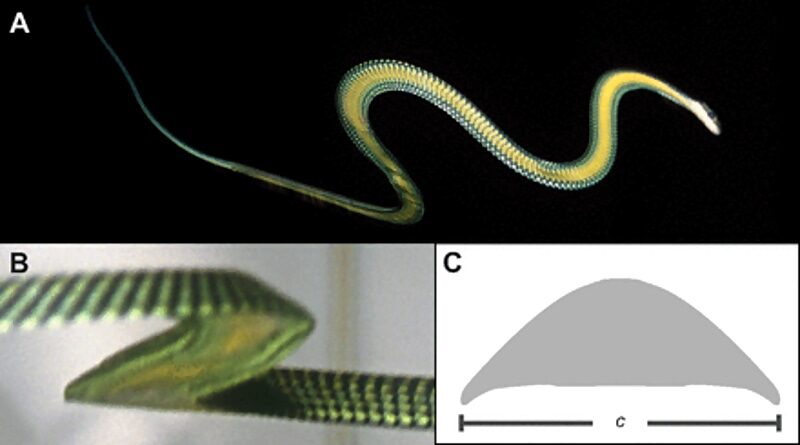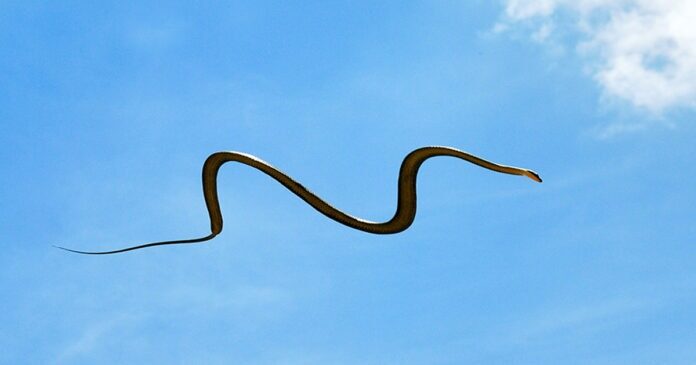Anyone scared of snakes on the ground may not want to read this story — because the reptiles are also in the sky.
The paradise snake, which is native to south and southeast Asia, has been known to scientists for some time. But they never really understood how the species — and others like it — are able to glide through the air.
Researchers at Virginia Tech conducted controlled tests with the snakes in an indoor environment.

Previously, researchers thought the snakes' movements in the air were the same movement they used when slithering on the ground.
Flying snakes
There are five recognized species of flying snake: Golden tree snake, Paradise tree snake, Twin-barred tree snake, Moluccan flying snake,Sri Lankan flying snake.
They are mildly venomous snakes, but their tiny, fixed rear fangs make them harmless to humans.
The smallest species reach about 2 feet (0.6 m) in length and the largest grow to 4 feet (1.2 m). They live from western India to the Indonesian archipelago.
Knowledge of their behavior in the wild is limited, but they are thought to be highly arboreal, rarely descending from the canopy. Just imagine one falling right on your head! OMG!




R.C.
P.s., NEVER harm snakes! They are cool!
RC